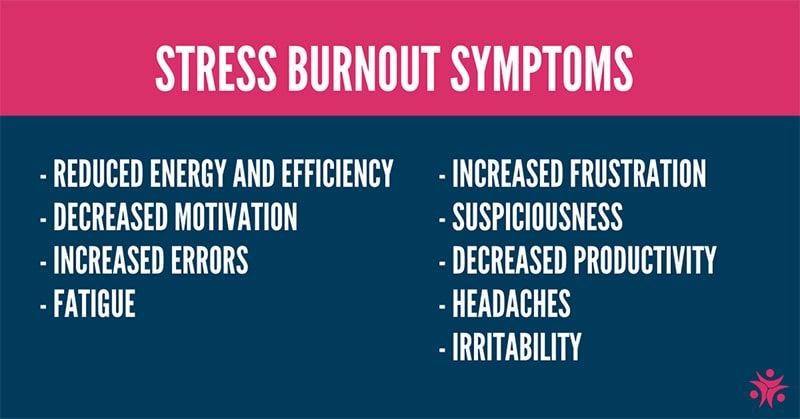Make an Appointment
Burnout is a prevalent issue, hovering between the need for a substantial vacation and the urge to flee to a tropical paradise indefinitely. It's certainly not an ideal state to be in.
In this discussion, we'll delve into burnout, its triggers, and strategies to preclude its occurrence within your team.
Burnout, alternatively referred to as burnout stress syndrome, typically manifests as a severe reaction to continuous emotional and interpersonal strain. Its multifaceted and complex nature makes it challenging to recognise, leading many employers to overlook it until it's too late.
What is burnout?
Burnout, also sometimes known as burnout stress syndrome is usually an intense response to chronic emotional and interpersonal stressors. This complicated and multi-dimensional definition is partly why burnout is so difficult to identify and why so many employers fail to spot it in employees before it’s too late.
Generally, burnout signals emerge when an employee consistently displays exhaustion, cynicism, and inefficiency, often driven by:
- Excessive job requirements
- Role conflicts and ambiguities
- High personal expectations
- Feelings of inadequacy, incompetence, and under appreciation
- A sense of loss of control at work
- Unsuitable company fit
- Insufficient resources
- Lack of social support and feedback
- Work-value conflicts
Personality traits such as a high external locus of control, can also influence susceptibility to burnout.
Curiously, denial of burnout often accompanies the condition. If an employee accused of nearing burnout responds defensively, it may indicate impending burnout, which could result in a more profound impact when it strikes.
Burnout and stress have a cyclical relationship. Symptoms of burnout often resemble workplace stress, and stress can instigate burnout. Therefore, preventing both is vital for your staff's overall wellbeing.
- “Once I achieve this goal, I’ll be fine.”
- “I need to get this promotion.”
- “You don’t understand.”
Often, this denial can lead to an even harder fall, since when burnout does occur, it’ll come as more of a shock.
How can burnout increase stress?
While burnout can cause stress, stress can also cause burnout. The relationship is not so much linear as it is cyclical -- and a vicious cycle at that.
A lot of the symptoms of burnout can also be defined as workplace stress. After all, conflict with coworkers, feeling inadequate, and unmet expectations can all be incredibly stressful situations.
Stress manifests through poor sleep habits, skin issues, and symptoms of burnout escalate to self-medication, negativity, cynicism, and severe self-doubt in their abilities.
Regular interaction with your staff is crucial in identifying these symptoms, without which preventing burnout becomes impossible.
What are the symptoms of burnout and stress?
Early identification of burnout requires understanding its symptoms, such as reduced energy, motivation, productivity, and increased errors, fatigue, frustration, and irritability.

Again, the symptoms of burnout will be similar to the symptoms of stress. However, some particular stress symptoms include:
- Poor sleep habits
- Acne
- Stress rash or other skin issues
Burnout is more severe when employees start exhibiting symptoms including:
- Self-medication with alcohol or other drugs
- Sarcasm, negativity, and extreme cynicism
- Debilitating self-doubt in their abilities
Before we go any further, it’s important to also point out that it doesn’t matter if you know what to look for if you’re not giving yourself the opportunity to see the signs of burnout.
It’s so important for leaders and business owners to take a hands-on approach and interact with your staff on a regular basis. Without connecting with your employees, there will be no way to tell if they’re experiencing these burnout symptoms and you won’t be able to prevent its consequences.
What are the consequences of burnout?
Although burnout isn’t considered a mental illness, it is certainly a chronic condition that will require changes to improve. Otherwise, you’ll risk the following consequence among your staff:

How to Prevent Burnout
Though burnout isn't a mental illness, it's a chronic condition necessitating change. Ignoring it can lead to increased staff turnover, poor health, job dissatisfaction, reduced productivity, heightened accident risks, low morale, communication breakdowns, clinical depression, and absenteeism.
Fortunately, business owners and leaders can employ several strategies to prevent burnout:
- Assign manageable tasks and goals
- Clearly communicate expectations
- Encourage passion projects
- Maintain reasonable working hours
- Schedule and enforce breaks
- Promote flexibility
- Avoid overburdening your team
- Define roles clearly
- Equip employees with necessary tools
- Offer resources and training
- Foster a supportive culture
- Provide feedback
- Encourage socialising and physical activity
- Lead by example
- Practice fairness
- Acknowledge and reward staff
- Delegate responsibilities and empower decision-making
- Educate about burnout
At Physio Inq, we prevent burnout by introducing variety in daily tasks, advocating vacations, and supporting personal passion projects. Regular check-ins, daily huddles, and performance reviews enable staff to voice concerns, facilitating necessary changes to prevent burnout and maintain smooth operations.
However, even with preventive measures, some employees might still experience burnout. In such cases, it's essential not to exacerbate the situation. You can manage burnout by fostering meaningful work, conducting regular job analyses, promoting responsibility, regular exercise, and learning stress management tools.
Preventing stress aids in burnout prevention and vice versa, creating a beneficial cycle.
Date Published: Wednesday, October 7, 2020
Date Modified: Tuesday, July 16, 2024
Need to get into direct contact with ur Client Services team? We're all ears. Call our team directly on 1300 731 733



